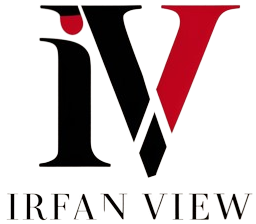In today’s fast-paced business environment, organizations are continually searching for methods to increase productivity and reduce waste. Lean Management is one such approach, rooted deeply in the philosophy of maximizing customer value while minimizing waste. This approach fosters a culture focused on continuous improvement and long-term change in the way work is completed. This article will explore how Lean Management can maximize workplace efficiency and the key elements involved in implementing this approach effectively.
Understanding Lean Management
Lean Management originated from the Toyota Production System (TPS), developed by Toyota in the 1950s. This methodology focuses on value creation for the customer, with every action and process scrutinized to eliminate waste and improve efficiency. It’s based on two primary pillars: respect for people and continuous improvement.
Lean Management is not about working harder, but working smarter. It involves a cumulative process of small, incremental changes that collectively result in significant improvements over time. By prioritizing activities that add value and systematically rooting out waste, businesses can streamline processes, reduce costs, and enhance productivity.
The Core Principles of Lean Management
Lean Management revolves around five fundamental principles:
- Value: Identifying what truly adds value from the customer’s perspective and eliminating what doesn’t.
- Value Stream: Mapping the entire process flow and identifying areas of non-value activities to eliminate waste.
- Flow: Ensuring that production processes flow smoothly without interruptions or delays.
- Pull: Producing items only as needed, thereby reducing excess inventory and overproduction.
- Perfection: Continuously improving processes and striving for excellence in every aspect of the business.
By adhering to these principles, organizations can create a streamlined workflow and a culture dedicated to continuous improvement.
Implementing Lean Management Techniques
1. 5S Methodology
The 5S methodology focuses on workplace organization and standardization. It includes five phases: Sort (Seiri), Set in Order (Seiton), Shine (Seiso), Standardize (Seiketsu), and Sustain (Shitsuke). Implementing the 5S can improve efficiency by creating an organized and efficient workspace.
2. Value Stream Mapping (VSM)
Value Stream Mapping is a visual tool used to analyze and design the flow of materials and information required to bring a product or service to the customer. It helps identify waste, streamline processes, and facilitate better decision-making.
3. Kanban System
The Kanban System is a visual workflow management tool that helps in managing work efficiently and effectively. It works on the principle of ‘pull,’ providing real-time visualization of the work process, helping teams manage tasks and workloads better.
4. Continuous Improvement (Kaizen)
Kaizen, or continuous improvement, involves everyone in the organization working together to make incremental improvements on a consistent basis. This fosters a culture of ongoing learning and development, leading to more efficient and effective processes.
5. Just-In-Time (JIT)
Just-In-Time is a production strategy that strives to improve a business’s return on investment by reducing in-process inventory and associated carrying costs. JIT focuses on producing only what is needed, when it is needed, and in the exact amount needed.
Benefits of Lean Management
Implementing Lean Management principles and techniques offers numerous benefits:
- Reduced Waste: By eliminating non-value-added activities, organizations can significantly reduce waste in terms of materials, time, and costs.
- Increased Efficiency: Streamlined processes and improved workflows lead to higher productivity and shorter lead times.
- Enhanced Quality: Continuous improvement efforts ensure that products and services are consistently high in quality.
- Employee Engagement: Lean Management encourages employee involvement and empowerment, leading to higher morale and job satisfaction.
- Customer Satisfaction: Efficient processes and high-quality products result in greater customer satisfaction and loyalty.
Challenges in Lean Management Implementation
While Lean Management offers significant benefits, its successful implementation can be challenging. Some common obstacles include:
1. Resistance to Change
Change is often met with resistance, especially in established organizations. Employees may be wary of new methodologies and reluctant to alter their work routines. Overcoming this resistance requires strong leadership, clear communication, and involvement of employees in the change process.
2. Inadequate Training
Effective implementation of Lean Management requires comprehensive training at all levels of the organization. Without proper training and education, employees may struggle to understand and apply Lean principles effectively.
3. Short-Term Focus
Lean Management is a long-term strategy that emphasizes incremental improvements. However, some organizations may focus too much on short-term gains, neglecting the need for sustained, continuous improvement efforts.
4. Lack of Leadership Support
Leadership support is crucial for the success of Lean initiatives. Without commitment and involvement from top management, Lean Management efforts may falter.
Conclusion
Lean Management is a powerful approach to maximizing workplace efficiency and fostering a culture of continuous improvement. By focusing on value creation, streamlining processes, and eliminating waste, organizations can achieve significant productivity gains, reduce costs, and enhance overall quality. While the implementation of Lean Management can be challenging, the long-term benefits far outweigh the obstacles. With effective training, strong leadership, and a commitment to continuous improvement, organizations can harness the full potential of Lean Management to achieve operational excellence and long-term success.
FAQ
1. What is Lean Management?
Lean Management is a systematic approach to streamlining processes and eliminating waste, originally developed from the Toyota Production System. It focuses on maximizing customer value while minimizing waste.
2. How can Lean Management increase workplace efficiency?
Lean Management increases workplace efficiency by systematically identifying and eliminating waste, streamlining workflows, and fostering a culture of continuous improvement.
3. What are some common Lean Management techniques?
Some common Lean Management techniques include the 5S methodology, Value Stream Mapping, the Kanban System, Continuous Improvement (Kaizen), and Just-In-Time (JIT) production strategies.
4. What are the benefits of implementing Lean Management?
Benefits of implementing Lean Management include reduced waste, increased efficiency, enhanced quality, improved employee engagement, and greater customer satisfaction.
5. What challenges might organizations face when implementing Lean Management?
Challenges in implementing Lean Management may include resistance to change, inadequate training, a short-term focus, and lack of leadership support.










